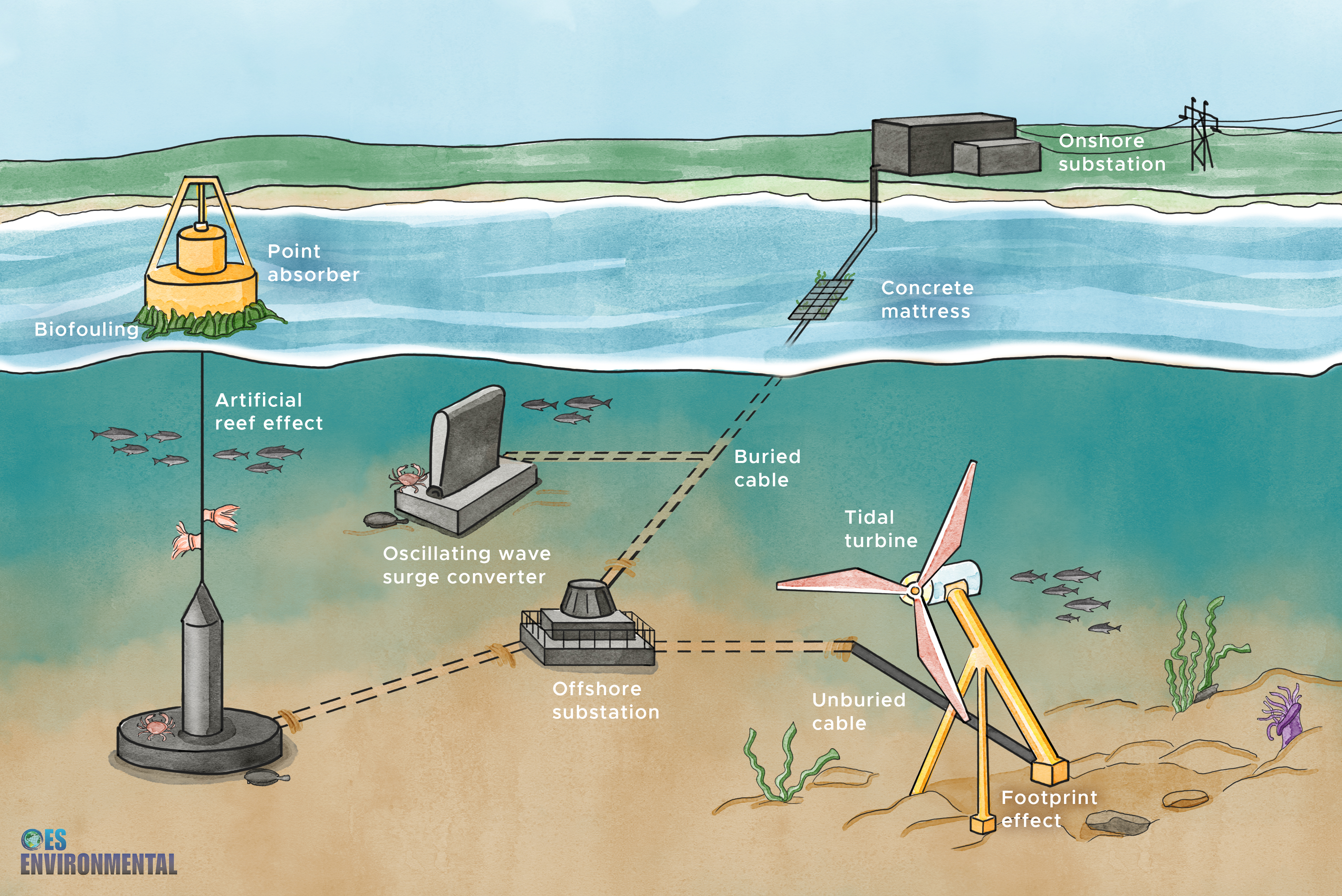Abstract
The guidance documents are intended to be available for regulators and advisors as they carry out their decision-making and for developers and consultants as they prepare consenting and licensing applications. This stressor-specific document presents an overview of the scientific information that is known for habitat change. It is not intended to replace any regulatory requirements or prescribe action for a particular risk. This document is intended to be read in conjunction with the background document.
Habitats are the natural environments of an organism, comprising the array of physical and biological resources necessary for survival and reproduction, and are the foundation for organisms in the marine environment providing protection, preys to feed on, etc. Structures placed in the marine environment have the potential to alter habitats or impact marine organisms. Habitat alteration, loss, or creation may occur throughout the marine environment, including in benthic (seafloor) or pelagic (water column) environments.

The evidence to date suggests that the impacts from habitat change from small-scale MRE developments are limited. Severe habitat change can be avoided or mitigated through identification and avoidance of fragile, unique, or important habitats during site selection. Overall, there is general consensus that habitat change from small-scale MRE developments does not typically pose a significant risk to habitats and marine plants and organisms when sited properly to avoid critical habitats.
Check out the links within the stressor-specific guidance document for habitat change for additional tools, resources and information.
